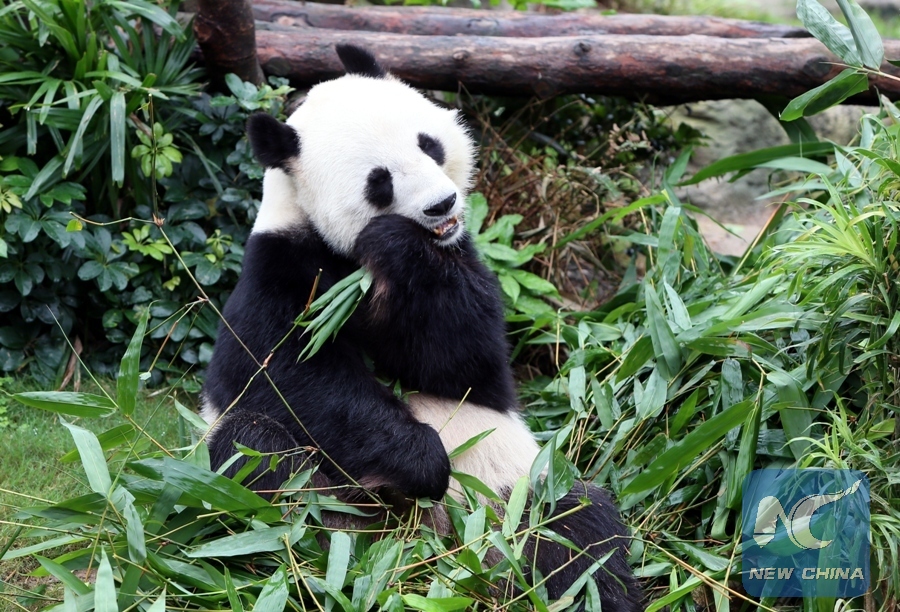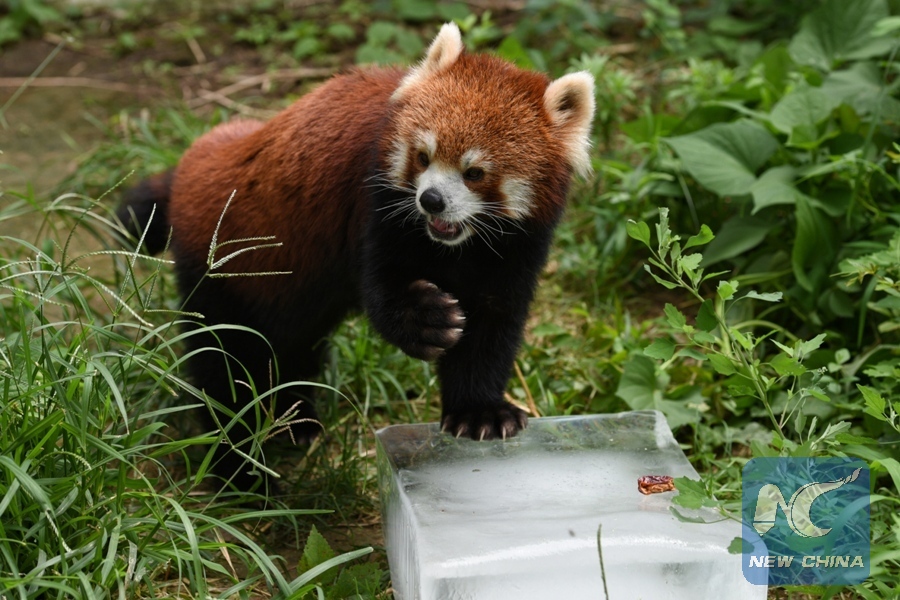
Le Le the panda eats the bamboo in the Ocean Park in Hong Kong, south China, May 27, 2016. (Xinhua/Li Peng)
WASHINGTON, Jan. 16 (Xinhua) -- Chinese researchers said Monday they have uncovered the genetic basis of why giant pandas and red pandas have evolved independently to have shared features such as a bamboo-based diet and false thumb.
Despite being classified as carnivores, both giant pandas and red pandas, which separately evolved from meat-eating ancestors and diverged from each other more than 40 million years ago, subsist almost entirely on bamboo -- a phenomenon termed convergent evolution, where similar traits arise in two unrelated or distantly related species.
Additionally, both species possess a false thumb, which enables the animals to adroitly grasp bamboo.
To uncover the genetic basis of such convergence, Fuwen Wei and colleagues from the Institute of Zoology, part of the Chinese Academy of Sciences, sequenced the genome of a wild male red panda and compared it with the reassembled genome of the giant panda. Their findings were published in the recent issue of U.S. journal Proceedings of the National Academy of Sciences.

A red panda rests on an ice cube to relieve summer heat at the zoo of Beijing, capital of China, Aug. 10, 2016. (Xinhua/Ju Huanzong)
The results confirmed that giant pandas belong to the family Ursidae together with polar bears, whereas red pandas belong to the superfamily Musteloidea together with ferrets and that the two species separated 47.5 million years ago, slightly earlier than previous molecular-based estimate of 43 million years ago.
Genome analysis revealed signs of adaptive convergence in 70 genes, including two genes, known as DYNC2H1 and PCNT, that are involved in false thumb development.
Further, enzymes involved in dietary protein digestion and amino acid utilization as well as proteins involved in vitamin metabolism and absorption showed signs of adaptive convergence, suggesting that these genes may have similarly evolved to support and supplement a bamboo-based diet.
Giant and red panda genomes also share 10 pseudogenes, or "false" genes, which look like real genes but have no apparent function.
Notably, the TAS1R1 gene, which enables carnivores to taste meat's umami flavor, has been pseudogenized in both pandas, reflecting the animals' shift from carnivory to omnivory and, ultimately, herbivory.
"Our findings provide rich insights into genetic convergence mechanisms underlying phenotypic convergence and adaptation to a specialized bamboo diet in both pandas," the researchers wrote in their paper.
"These findings demonstrate that genetic convergence occurred at multiple levels spanning metabolic pathways, amino acid convergence, and pseudogenization, providing a fascinating example for genome-scale convergent evolution analysis of dietary shift and specialization."

